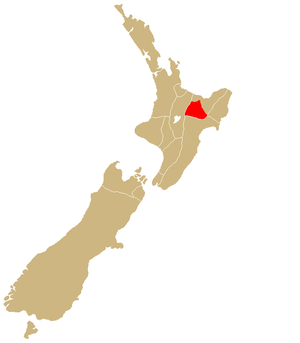| dbo:abstract
|
- Ngāi Tūhoe (Māori pronunciation: [ˈŋaːi ˈtʉːhɔɛ]), often known simply as Tūhoe, is a Māori iwi of New Zealand. It takes its name from an ancestral figure, Tūhoe-pōtiki. Tūhoe is a Māori-language word meaning "steep" or "high noon". Tūhoe people also bear the sobriquet Nga Tamariki o te Kohu ("the children of the mist"). Tūhoe traditional land is at Te Urewera (the former Te Urewera National Park) in the eastern North Island, a steep, heavily forested area which includes Lake Waikaremoana. Tūhoe traditionally relied on the forest for their needs. The tribe had its main centres of population in the small mountain valleys of Ahikereru and Ruatāhuna, with Maungapohatu, the inner sanctum of the Urewera, as their sacred mountain. The Tūhoe country had a great reputation among the neighbouring tribes as a graveyard for invading forces. Tūhoe people have a reputation for their continued strong adherence to Māori identity and for their unbroken use of the Māori language, which 60% of them still speak (2016 figure). Of the Tūhoe people, estimated to number between 33,000 and 45,000, about 30 per cent still live on their tribal lands; most of the rest live in towns on the fringes of Te Urewera and in the larger North Island cities. At least 5,000 live in Australia. Subtribes of Tūhoe include Ngāti Koura, Ngāti Rongo, Ngāti Tāwhaki, Tamakaimoana, Ngāti Whare, Te Whānau Pani, Ngāti Hinekura and Patuheuheu. The Tūhoe continue to maintain camps in Te Urewera and help run conservation programmes for endangered birds, such as the North Island brown kiwi and the North Island kōkako. Many Tūhoe return to their homelands every two years for the Te Hui Ahurei ā Tūhoe (Tūhoe Festival), which features kapa haka, debates, sports competitions, and fashion shows. The event provides an important opportunity to maintain ties with friends and relatives. (en)
- Ngai Tuhoe (ou Ngāi Tūhoe) est une tribu (iwi) maorie dont les terres se trouvent dans la région de l'Urewera de l'île du Nord de Nouvelle-Zélande. Ces terres sont montagneuses, avec d'épaisses forêts et des vallées fluviales, peu propices dans l'ensemble à l'agriculture. (fr)
|
| rdfs:comment
|
- Ngai Tuhoe (ou Ngāi Tūhoe) est une tribu (iwi) maorie dont les terres se trouvent dans la région de l'Urewera de l'île du Nord de Nouvelle-Zélande. Ces terres sont montagneuses, avec d'épaisses forêts et des vallées fluviales, peu propices dans l'ensemble à l'agriculture. (fr)
- Ngāi Tūhoe (Māori pronunciation: [ˈŋaːi ˈtʉːhɔɛ]), often known simply as Tūhoe, is a Māori iwi of New Zealand. It takes its name from an ancestral figure, Tūhoe-pōtiki. Tūhoe is a Māori-language word meaning "steep" or "high noon". Tūhoe people also bear the sobriquet Nga Tamariki o te Kohu ("the children of the mist"). Tūhoe traditional land is at Te Urewera (the former Te Urewera National Park) in the eastern North Island, a steep, heavily forested area which includes Lake Waikaremoana. Tūhoe traditionally relied on the forest for their needs. The tribe had its main centres of population in the small mountain valleys of Ahikereru and Ruatāhuna, with Maungapohatu, the inner sanctum of the Urewera, as their sacred mountain. The Tūhoe country had a great reputation among the neighbouring tr (en)
|




